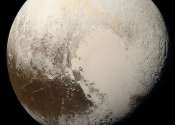Two planets found orbiting a red dwarf
Red dwarfs are the coolest kind of star. As such, they potentially allow liquid water to exist on planets that are quite close to them. In the search for habitable worlds beyond the borders of our solar system, this is a ...









